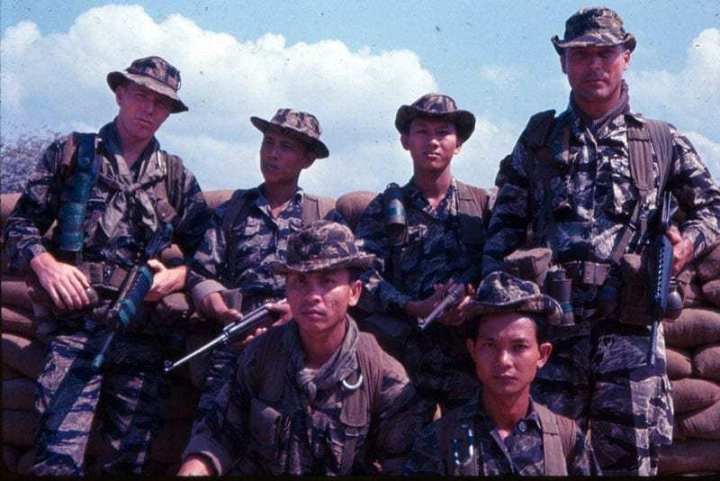
LEAPING LENA
American operations against the trail began as early as 1961. The CIA, in an effort to develop a more complete understanding of Hanoi’s use of the trail, trained Lao tribesman in road-watching techniques. Using nothing more sophisticated than cameras, the tribal detachments gathered information on the flow of PAVN men and materiel. Although the CIA case officers responsible for overseeing the program were skeptical about its effectiveness—noting, for example, that the trail watchers often lost their cameras U.S. Secretary of Defense Robert S. McNamara believed that the reconnaissance teams were beneficial and urged their greater use.
By 1964, as Hanoi’s reliance on the trail expanded, senior Johnson administration officials approved more aggressive covert operations in Laos. In May 1964, the U.S. Military Assistance Command Vietnam (MACV) began training five eight-man teams of South Vietnamese Montagnard tribesmen led by South Vietnamese Special Forces personnel. Known as LEAPING LENA, this project involved the creation of forces that would conduct reconnaissance operations across the border in Laos. U.S. personnel, while helping to organize, train, and equip the South Vietnamese force, would have no direct role in the operations of the units. During late June and early July, the teams parachuted into Laos. They were poorly motivated and poorly led—“you had to damn near force them on the plane at the point of a gun,” recalled one U.S. special forces advisor—and nearly all of the LEAPING LENA personnel were located by the enemy and captured or killed.16 The few survivors who managed to straggle back across the border to South Vietnam brought low-level intelligence of little military utility. However, while LEAPING LENA clearly failed to achieve its objectives, it did have two noteworthy consequences for unconventional American military operations in Southeast Asia. First, LEAPING LENA served as the nucleus for a far more successful successor effort, known as Project DELTA, which fielded combined American and South Vietnamese special forces units for long-range reconnaissance missions inside South Vietnam.17 These units located enemy forces, collected intelligence, called in air strikes, and conducted BDA. One of the most innovative aspects of Project DELTA was its use of U.S. Air Force (USAF) forward air controllers (FACs). First assigned to Special Forces units in December 1965 overhead FACs directed air strikes, helped exfiltrate teams in trouble, and provided radio relay. The new tactics and procedures developed by USAF and Special Forces personnel resulted in “one of the most significant and more productive applications of airpower in Vietnam” and represented “a high payoff for a small investment of resources,” according to a 1969 Air Force study.18 Second, LEAPING LENA’s failure provided a negative example for U.S. military officials, who were now convinced that successful covert, cross-border operations required direct U.S. military participation. The LEAPING LENA debacle was to lead directly to the U.S. decision to send U.S.-led teams into Laos to help disrupt Hanoi’s use of the Ho Chi Minh Trail.

